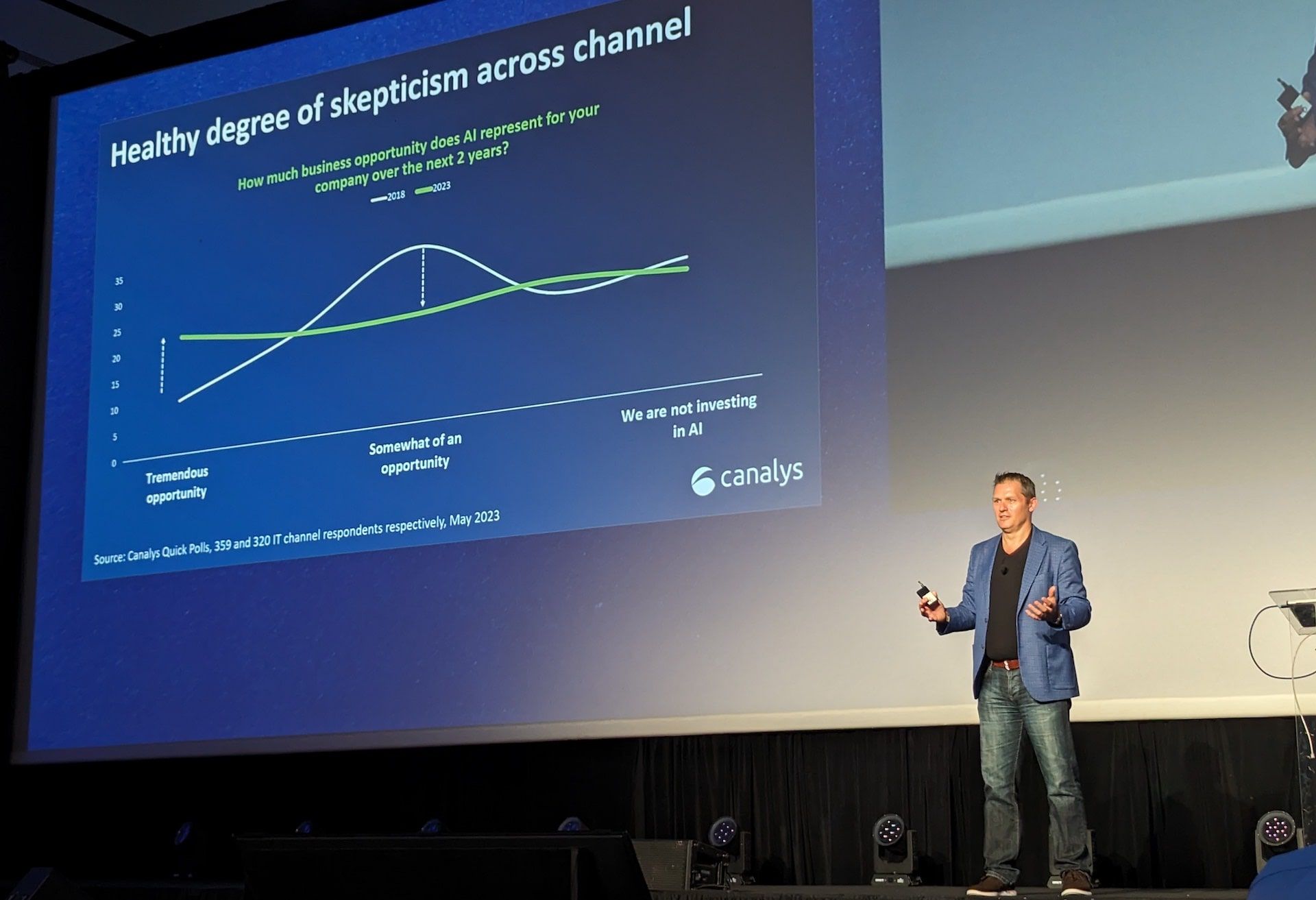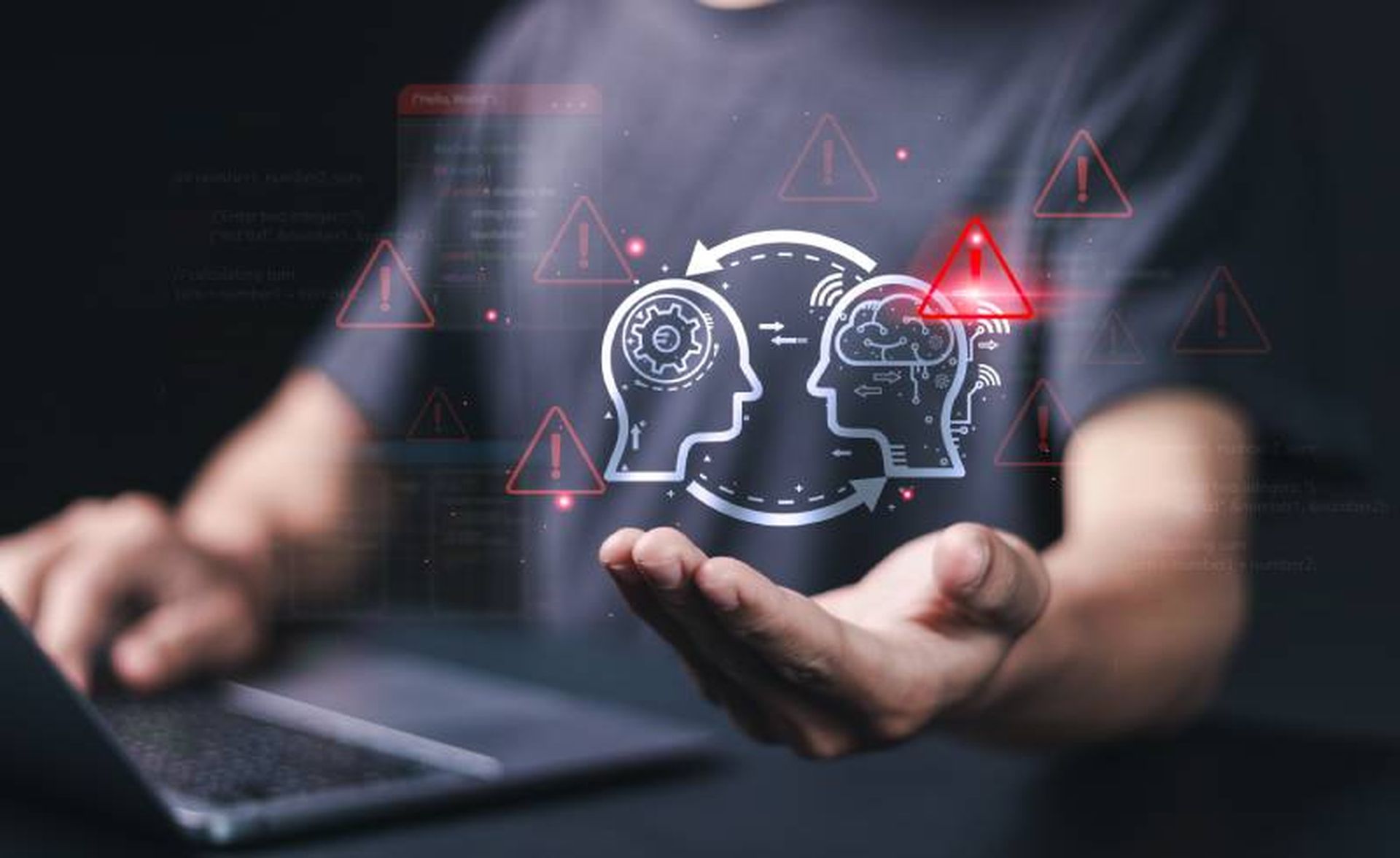Some seismic shifts have taken place over the last few years that MSPs and other members of the channel ecosystem will want to pay close attention to in the years ahead. It's not all about generative AI.
Want to know the trends that will shape the channel, the tech industry, and the world this year? Futurist and Canalys chief analyst Jay McBain provided his take on the 5 Trends to Watch in 2024 at the Nerdiocon event in Punta Cana, the Dominican Republic.
1. B2B Buying is Changing
So is the psychology, the behavior and the journey, McBain said.
There’s been a seismic shift recently in that most buying is being done by millennials, and they are digital-first buyers. A full 75 percent of these buyers don’t want to talk to a salesperson. They want to be able to make a million-dollar software purchase without ever talking to a human. These buyers are subscription- and consumption-friendly.
What’s more, these buyers are focused on integration first. If you don’t integrate with the other providers in their stack, they are more likely to look for a different partner.
“When you hear about all the vendors outside [at the exhibit booths] and all the way they're working together, that's serving the new buyer who wants everything to work together,” McBain said.
The average Microsoft marketplace deal today is seven layers – i.e. it includes seven solutions -- because the buyer won’t do the deal without cybersecurity or data backup or any number of other solutions, according to McBain.
“The average security deal today toward zero-trust or toward SASE is seven layers deep. It's a magic number, seven. It's another interesting thing when you look at medium-sized customers and larger. They trust seven partners,” McBain said.
The days of ‘a single throat to choke’ or this 'trusted advisor' seem to be over, McBain said, because these customers think of IT services as a team sport. They are digital-first and marketplace-focused.
As an example of the integration-first mindset, McBain pointed out that 79% of people won’t buy a car today if it doesn't support Apple CarPlay (or the Android equivalent).
“Car companies are responding quickly to this new integration that's coming. Not just the integrations in front of the driver, which is the driving experience, but the integrations below. There are not going to be battery companies and motor companies. There are going to be about three big platforms that you drive on. Partnerships with the dealer, the partnerships with transportation as a service,” McBain said. “So, who should be the next head of these companies? Probably a partnership person.”
2. 2024 is the Year of the Platform
It’s been said that every company will become a tech company, a software company. McBain said that actually, the smart companies are trying to become a platform companies.
“Everybody is trying to achieve this platform level,” McBain said. That’s pretty evident in the marketing business. Hubspot, once a laggard in its market behind a number of more successful competitors, became an overnight industry leader because it earned the “platform” moniker. McBain says it’s because they made themselves easy to integrate with, and that made it easier for buyers to work with than, say, Oracle or Adobe. In addition, they also knew that their buyer, often the CMO, spends more money on technology than the CIO does. Because it’s a platform, digital agencies are being welcomed into HubSpot now. So, digital agencies wrapped themselves around HubSpot.
In the new era, CEOs are not just talking about total available market (TAM). They are now starting to sell like SaaS companies do, McBain said. That means they are looking at their serviceable available market (SAM) and their serviceable obtainable market (SOM).
“The second that senior executives and board members start to talk at this level of granularity, this is when the channel is in the driver’s seat because this is what we do. We cover the market. We are on the front line of creating these opportunities for Nerdio and Microsoft,” McBain said.
The partnership channel has become a team sport, he said. You work with a digital agency, an accountant, a consultant, a systems integrator, an IT service provider.
“You all work together with a trusted seat at the customer table.”
Cloud marketplaces are doubling their businesses every year, McBain said. Now vendors such as CrowdStrike, Palo Alto Networks, and Snowflake are issuing press releases about hitting $1 billion on the AWS marketplace.
“There is new economics that we need to understand because these marketplaces are really partner-friendly,” McBain said.
Traditional tech distributors such as TD Synnex, Ingram Micro, D&H, and more are evolving to this new marketplace mindset. And companies such as Pax8 were born in the cloud to serve this kind of purpose for IT service providers.
3. Economics of Partnering has Changed for the First Time Ever
While marketplaces are partner-friendly, when we lose the point of sale, somebody else collects the money.
McBain, who previously ran the channel for IBM and Lenovo, said that partner compensation has traditionally been tied to the point of sale because that’s where vendors can measure it. But that approach means that half of partners are overpaid and half are underpaid. It should be at the point of value. In the ecosystem model where integration matters, vendors should look beyond the traditional Gold, Silver, and Bronze tiers of a partner program and focus on the aspects that provide value.
Microsoft disrupted its traditional partner program by introducing a controversial point system that moved towards compensating partners at the point of value rather than the point of sale. The program pulled money away from resellers but added money everywhere else, McBain said. McBain pointed out that after 19 straight quarters of Microsoft outgrowing AWS, an ongoing record, Microsoft decided to take two-thirds of its customer spending post-sale -- not in marketing but in the idea of “customer for life.”
“When they did this, they told Wall Street, 'We think a really big revenue company, ecosystem friendly, with good partnerships and great ISVS like Nerdio -- with 108 percent retention, we think that’s more valuable than a hardware manufacturer that relies on a smartphone launch,' and the market responded. Two years later, Microsoft is more valuable than Apple because it’s very sticky, it’s very ecosystem-friendly…This is the economics of partnering that are changing, and if you realize that, well, there are riches there.”
4. End of the Cookie
The entire world of third-party data has tricked us and made us the product, McBain said. Apple was the first to say that it would block third-party cookies, and Google followed this year. Only two companies, Apple and Google, hold 99 percent share on mobile and desktop, so when they stop tracking us everything changes, McBain said.
When companies cannot track the buying journey before the customer gets to the point of sale, the effort shifts to second-party data. It’s now about “the e-book we wrote, the podcast we recorded, the event we ran, the Chamber of Commerce thing that we did," McBain said. "Now, these become early [marketing] moments. The only way that Nerdio, Microsoft or anyone can get to those moments is if they come to us and politely ask or pay us for that data because the only window into those early customer buyer intent moments will be ours. A Google search only shows organic people within five miles. You could be searching for a virtual desktop, but it thinks you need an oil change, so it shows you things within five miles of you.”
5. Generative AI is a Huge Opportunity. Just Not the Way We Think
There’s a healthy degree of skepticism about generative AI across the channel. McBain’s company, Canalys, has previously said that the opportunity for generative AI right now is primarily for systems integrators. The managed services opportunity will be in 18 to 24 months.
“Before we talk to customers, we should actually look at our own knitting,” McBain said.
MSPs today can be looking at how they can use generative AI to help with their own business operations – everything from marketing, billing, invoicing, and help desk. “Every part of our business can be rethought with AI,” McBain said.
MSPs will also be consuming AI via their vendor partners because companies such as Nerdio and all ISVs – including ConnectWise, Datto, Kaseya, N-able, and NinjaOne -- are all actively putting generative AI into their tools. Then it will become about the data services, McBain said, and it will be about MSPs’ ability to work with the Snowflakes and Datadogs of the world to go build data lakes and large language models and train them.
The edge is also an opportunity. McBain pointed out that 85 percent of the world’s data sits on-premises. Each of the CEOs of large language model companies -- trillion-dollar companies – have now admitted that they’re not forklifting the world’s data back into the public cloud. That work is going to be done at the edge. That’s where MSPs live.
So for the moment, forget about the big AI play, McBain said. MSPs are much better off focusing on the double-digit growth opportunity in managed services and the double-digit growth opportunity in cybersecurity.




